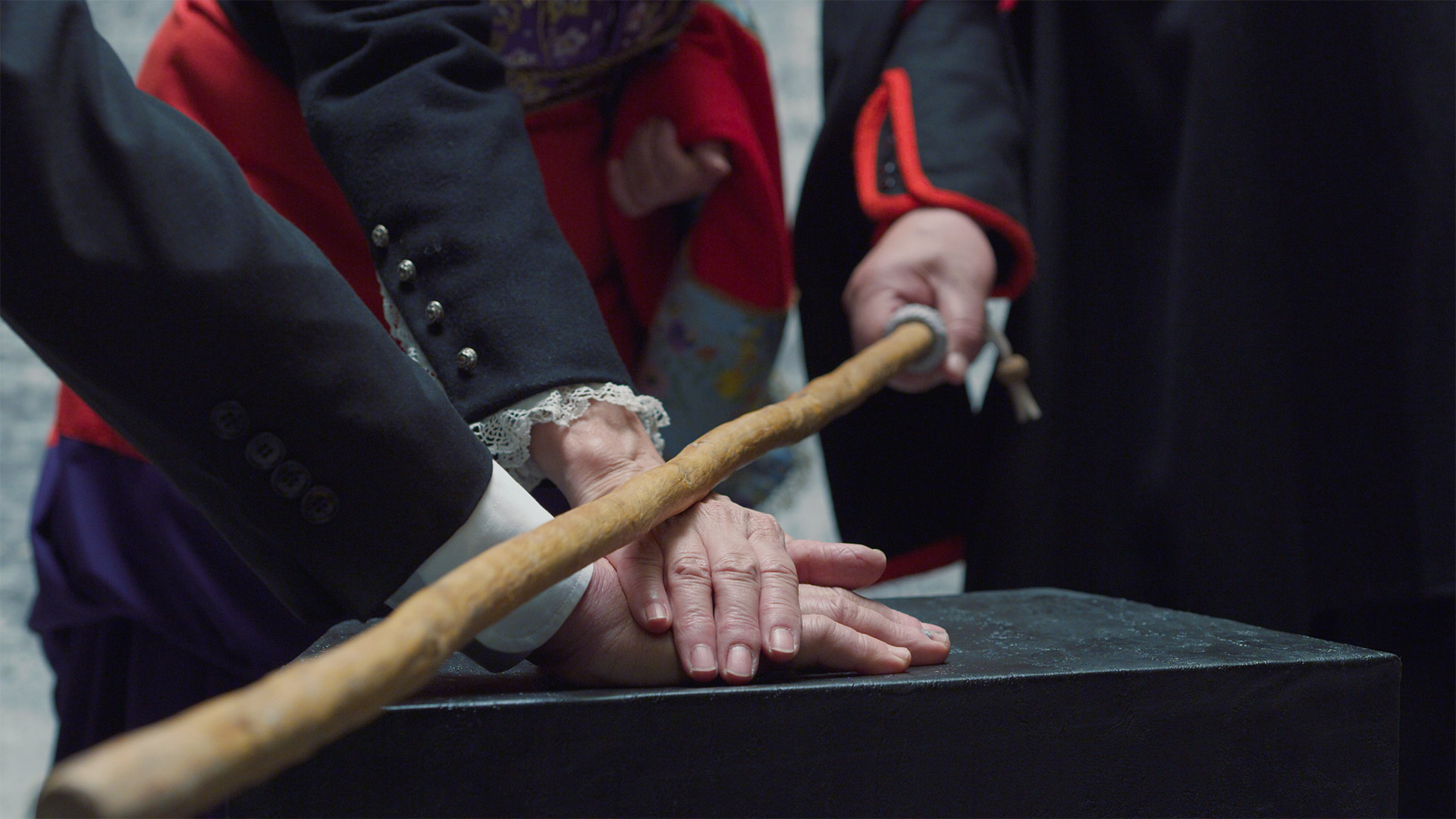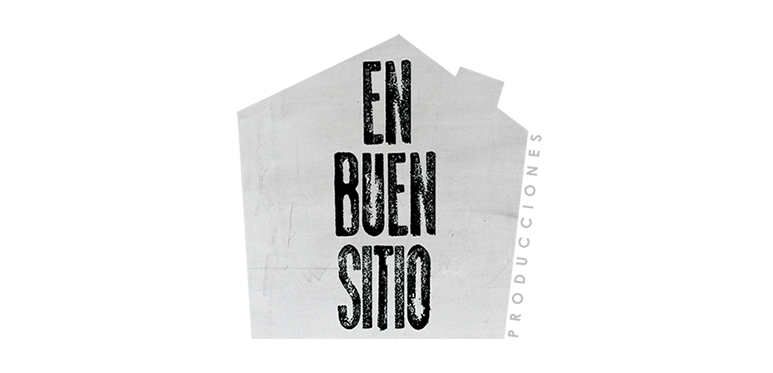Navarra inmaterial – Nafarroa inmateriala
Credits ↴
Book ↴
® All rights reserved 2021
Navarra inmaterial – Nafarroa inmateriala
Credits ↴
Book ↴
® All rights reserved 2025
Tributo De las Tres Vacas
Hiru Behien Zerga
The Tribute of the three cows
CAST
|
EUS
|
ENG
Ritos
Sociabilidad
Erritu
Soziabilitatea
Rites
Sociability
Uztárroz
Isaba
Roncal
María Jesús Ezquer
Marcelino Landa Pasquel
Jesús Artuch Sarriés
Isaba
Roncal
María Jesús Ezquer
Marcelino Landa Pasquel
Jesús Artuch Sarriés
Uztarroze
Izaba
Erronkari
María Jesús Ezquer
Marcelino Landa Pasquel
Jesús Artuch Sarriés
Izaba
Erronkari
María Jesús Ezquer
Marcelino Landa Pasquel
Jesús Artuch Sarriés
Uztárroz
Isaba
Roncal
María Jesús Ezquer
Marcelino Landa Pasquel
Jesús Artuch Sarriés
Isaba
Roncal
María Jesús Ezquer
Marcelino Landa Pasquel
Jesús Artuch Sarriés
“Tiene el valor de haber sabido resolver un conflicto por la vía del pacto, con un acuerdo entre las partes, no es imposición”.
“He estado 40 años de secretario del acto. Y tiene el futuro asegurado, es a perpetuidad, es un tributo de guerra”.
“He estado 40 años de secretario del acto. Y tiene el futuro asegurado, es a perpetuidad, es un tributo de guerra”.
El 24 de enero de 2011 el Gobierno de Navarra lo declaró Bien de Interés Cultural Inmaterial.3
El Tributo de las Tres Vacas es una ceremonia que reúne a los vecinos de los valles de Baretous (Bearne, Francia) y de Roncal (Navarra, España) en torno al mojón 262, que sustituye a la desaparecida "Piedra de San Martín" en 1858, cada cual en su territorio, en el fronterizo collado de Ernaz a 1721 m de altura llamada Piedra de San Martín en Belagua, el día 13 de julio de cada año, durante la cual los primeros entregan tres vacas a los segundos.
Se desconoce cuándo se iniciaron las disputas entre los pastores de ambos valles por los pastos y las fuentes de la alta montaña. Rencillas que se acabaron con este tratado que sigue en vigor y es el más antiguo de Europa, muy anterior a la sentencia de 1375,3 en la que se basa en la actualidad su realización. Los franceses deben entregar a los navarros tres vacas en buen estado de salud “de igual pelaje, cornaje y dentaje”. Cuando consideran que son válidas, las autoridades locales proceden al juramento, que consiste básicamente en gritar al unísono “Pax avant” (paz de ahora en adelante) con las manos puestas sobre el simbólico hito de piedra.
“Haren balioa gatazka bat itunaren bidez konpontzen jakitean datza, alderdien arteko akordio batekin, ez da inposaketa bat”.
“Ekitaldiaren idazkaria izan naiz 40 urtez. Etorkizuna ziurtatua du, betiko da, gerra-zerga bat”.
“Ekitaldiaren idazkaria izan naiz 40 urtez. Etorkizuna ziurtatua du, betiko da, gerra-zerga bat”.
2011ko urtarrilaren 24an, Nafarroako Gobernuak Kultura Intereseko Ondasun Immaterial3 izendatu zuen.
Hiru Behien Zerga Baretos (Bearno, Frantzia) eta Erronkari (Nafarroa, Espainia) ibarretako bizilagunak 262 mugarriaren inguruan biltzen dituen zeremonia da. Mugarri horrek 1858an desagertutako “San Martingo harria” ordezkatzen du. Herritarrak, nor bere lurraldean, Ernaz muinoan biltzen dira, Belaguako San Martingo harria deritzonetik 1721 metroko altueran dagoena. Uztailaren 13an ospatzen da urtero, eta lehenengoek hiru behi ematen dizkiete bigarrenei.
Ez dakigu noiz hasi ziren goi-mendiko zelai eta iturriak lortzeko bi ibarretako artzainen arteko liskarrak. Edonola ere, ituna istilu horietatik sortu zen. Oraindik indarrean dirau eta Europako zaharrena da, 1375eko epaia baino askoz lehenagokoa3 , gaur egungo errituak oinarri duena. Frantsesek osasun-egoera onean dauden hiru behi eman behar dizkiete nafarrei, “ilaje, adarje eta hortzaje berdinekoak”. Nafarrek baliozkotzat jotzen dituztenean, tokiko agintariek zin egiten dute, eskuak mugarri sinbolikoaren gainetan dituztela, aldi berean “Pax avant” (aurrerantzean bakea) oihukatuz.
“Its value rests on the fact that it solved a conflict through a pact, with an agreement between the parts, it is not an imposition. I have been the event’s secretary for forty years, and its future is guaranteed. This is a war tribute in perpetuity.”
On January 24, 2011, the Government of Navarre declared it intangible cultural heritage.3
The Tribute of the Three Cows is a ceremony that gathers the residents of the valleys of Baretous (Béarn, France) and Roncal (Navarre, Spain) around milestone 262, which replaced the old "St Martin’s Stone" in 1858. Every July 13, both groups meet at the pasture of Ernaz at 1721 m, called Piedra de San Martín in Belagua. During the ceremony, the French hand over three cows to the Spaniards.
The origin of the disputes between the shepherds from both valleys is unknown. The quarrels over the pastures and high-mountain water springs ended with this treaty, the oldest in Europe that is still enforced, far predating a ruling from 1375,3 which is the basis for the current event. The French must hand over three healthy cows “of the same coat, horns, and teeth” to the Navarrese. Once they consider them adequate, local authorities continue with the pledge, which basically means yelling in unison “Pax avant” (peace from now on) with their hands on the symbolic stone.
Items relacionados:Lanzamiento de rabiosa
Jota navarra (Bailada)
Volver
Rabiosa Jaurtitzea
Jota navarra (Bailada)
Nafarroako Jota (Dantza)
Volver
Ver detalles:

1



